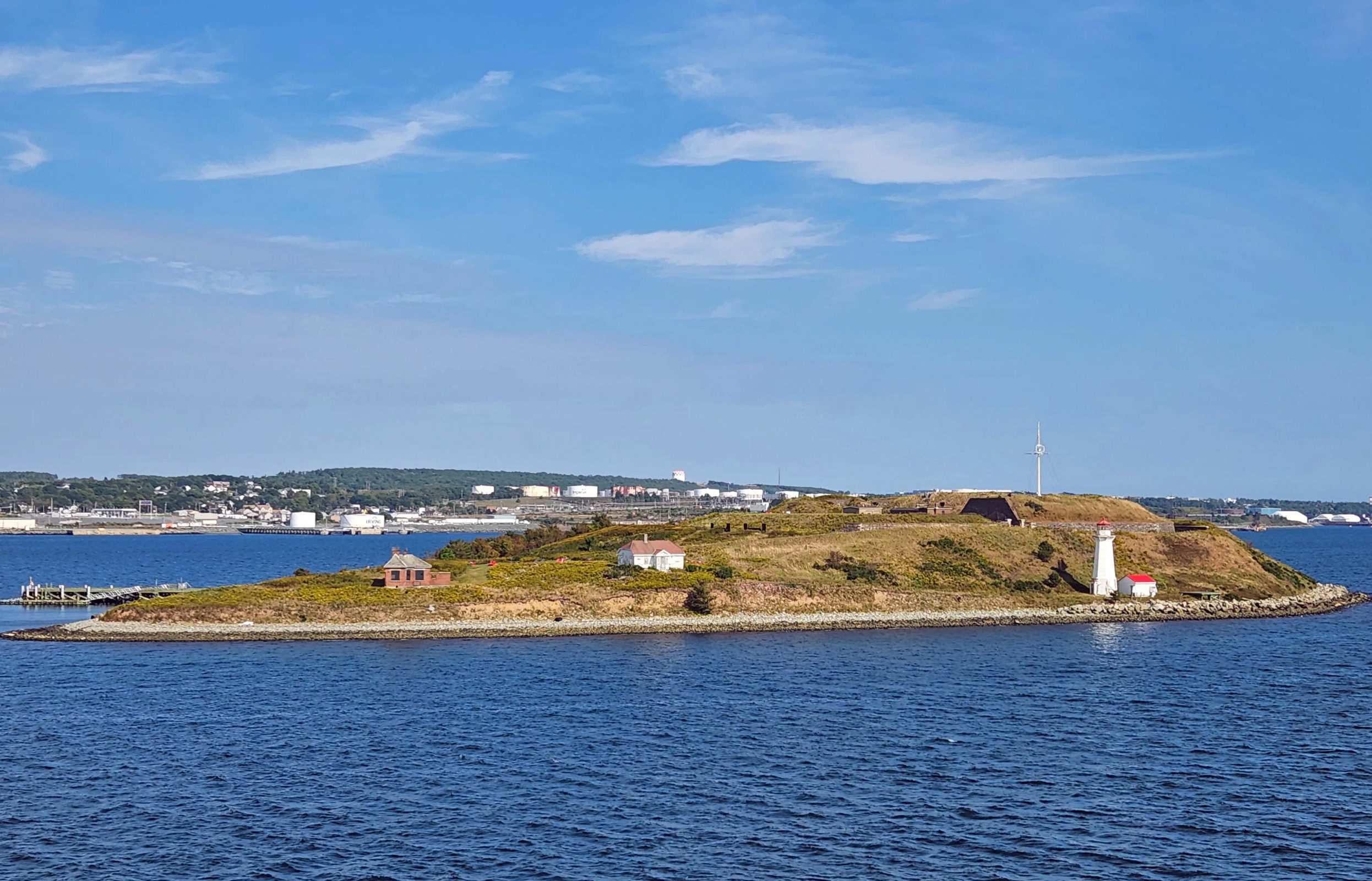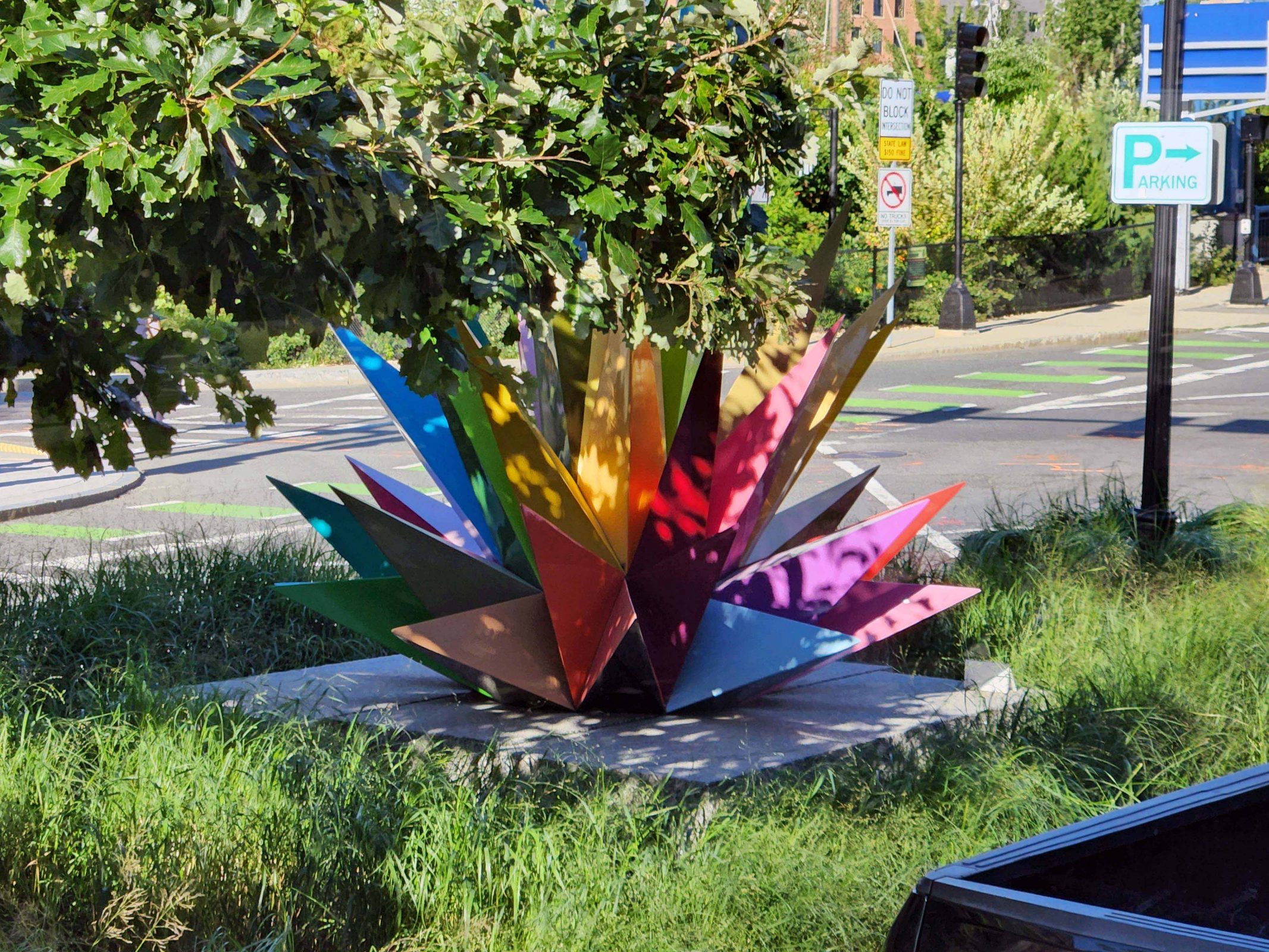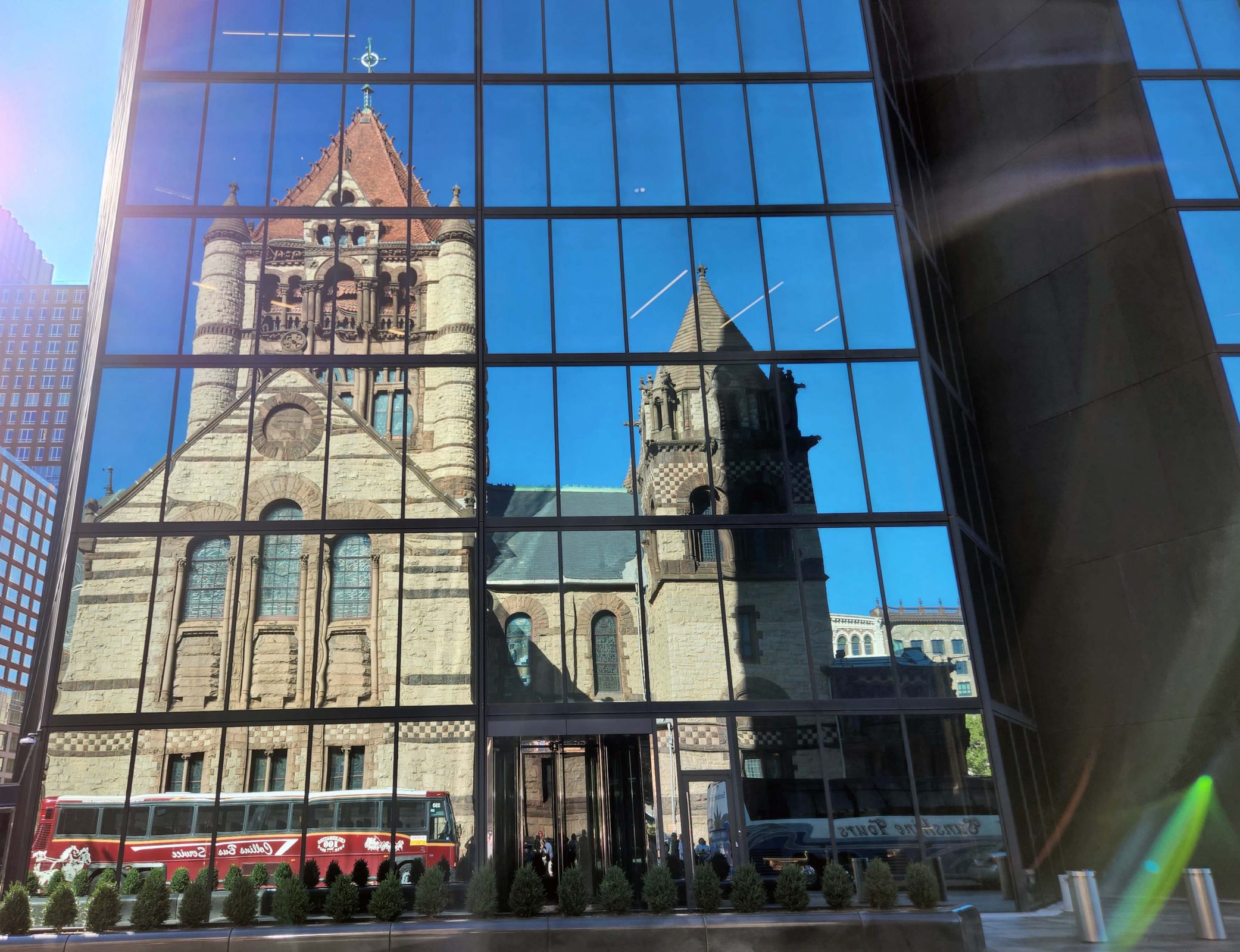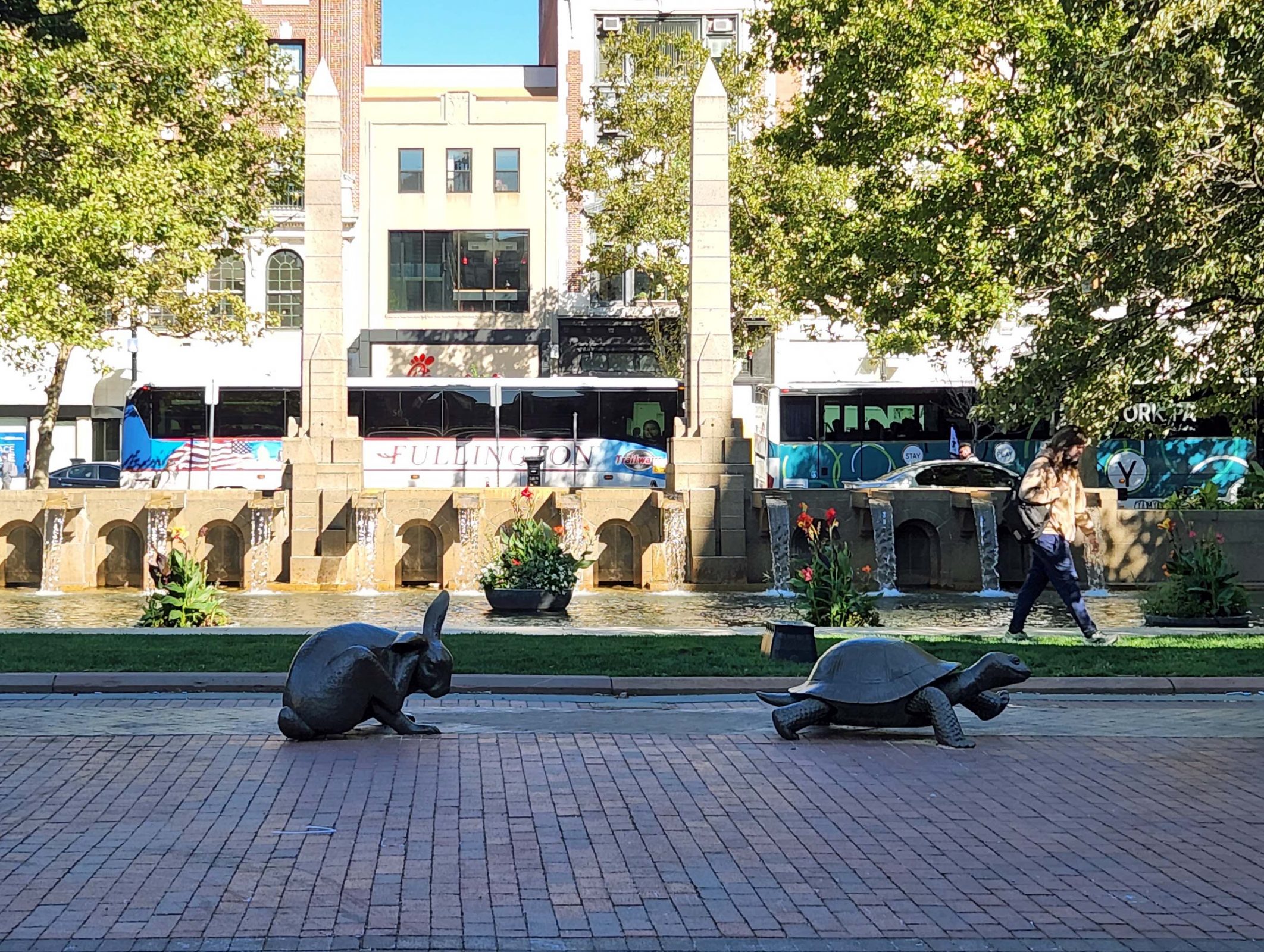Before leaving Halifax, customs agents came on board to verify all of our passports so that we could enter the U.S. again in Boston, our next port stop. On our way to Boston, I saw this pretty lighthouse on an island. I’m not sure where we are, but it’s safe to say it’s the Atlantic coast.

With the Viking cruise line, a city tour at each port of call is included with the cruise fare, so Ted and I usually take the tour. Today, it was an afternoon bus tour called “Panoramic Boston.” The weather was beautiful again, but my pictures are limited because we didn’t get off the bus very often. It’s hard to take pictures out of the bus windows or of things on the other side of the bus, but here goes.
Downtown Boston has a lovely street park called the Rose Kennedy Greenway Conservancy. Rose Kennedy is a big name in Boston. The Greenway is 1.5 miles long and runs down the center of the street. It is reminiscent of the Avenue des Champs d’Elysée in Paris. Within the Greenway, there are fountains, playgrounds, flower gardens, and a carousel. One of the flower gardens in the Greenway is a rose garden with 104 rose bushes–one for every year of Rose Kennedy’s life. I wish I could have taken more photos of the Greenway, but the only thing I captured was this piece of street art.

As we were riding through the city, I saw this restaurant and took a picture while the bus was stopped at a red light. Read the sign at the top, then check out the sign at street level. You have arrived at your destination. Cute, huh?

Trinity Episcopal Church, a National Historic Landmark, is the only church included on the American Institute of Architects list of the Ten Most Significant Buildings in the United States.* Like Montreal and Québec City, a significant percentage of Boston is built on land that was originally water. In addition, Boston is built on a swamp. To keep buildings from sinking, pilings are driven 30 feet into the ground below the water level where they stay wet and where bugs and air cannot rot them. Trinity Church is built on 4,500 such pilings. (Query: If cities keep taking dirt from the continents and putting it into the rivers and oceans, will the continents become low enough for the rivers and oceans to relocate inland, thus creating new, smaller continents?)

The church is built on a street corner. The Hancock Building, the tallest building in Boston, is across the street on the right side of the above picture. It reflects Trinity Church to create a metaphor of the old and the new in Boston. (You can see our tour bus in the lower left of the photo.)

Along our bus route, we had a quick stop at the start/finish line of the Boston Marathon where there are bronze sculptures of a hare and a tortoise to honor those who run in the marathon. The pillars, wall, and water feature behind the hare and the tortoise are a memorial to the casualties of the 2013 Boston Marathon bombing.

Today, we had an easy bus tour; tomorrow, we’re going to walk the Freedom Trail for four hours.
*The Ten Most Significant Buildings in the United States are: (1) Falling Waters (Allegheny Mtns., Frank Lloyd Wright); (2) the White House; (3) the Lincoln Memorial; (4) the U.S. Capitol; (5) the Guggenheim Museum (NYC, also Frank Lloyd Wright); (6) the Glass House (CT–also called the Johnson House by Philip Johnson); (7) Trinity Episcopal Church (Boston); (8) the Pentagon; (9) the Milwaukee Art Museum; and (10) the Smithsonian.